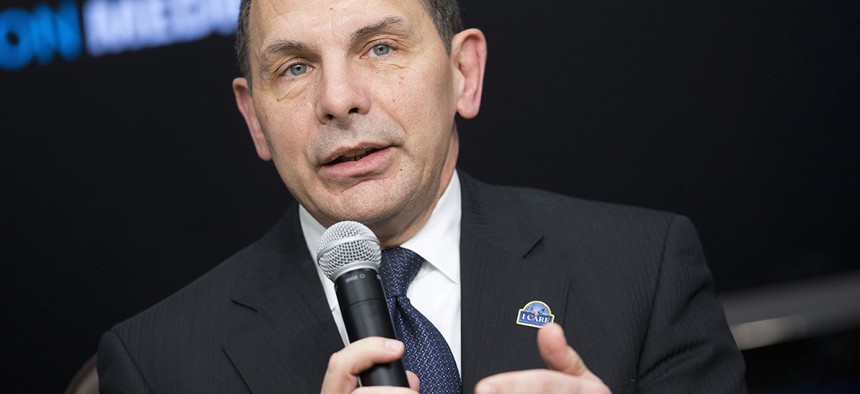VA Wants To Forecast Vets Benefits with Predictive Analytics

Veterans Affairs Secretary Robert McDonald Pablo Martinez Monsivais/AP
The department wants to understand how demand for benefits, and the VA’s ability to provide those benefits, affect individual veterans.
The Veterans Affairs Department may soon be using algorithms to make decisions about veterans benefits.
The VA is looking for information about predictive analytics technology and how it could be used to forecast the demand for certain benefits. The approach could help the agency understand the gap between demand for those benefits and the VA's capability to provide them, as well as the “consequences to the veteran of not closing the gap,” according to a new FedBizOpps posting.
Having a better understanding of demand, based on factors including the state of the economy, could help the VA ensure that "workforce capabilities are optimized" across various lines of business, the posting said. It could also predict the VA's capacity under various circumstances to deliver those.
The Veterans Benefits Administration's request for information notes its need for predictive and simulation modeling, as well as consultative services to support leadership decisions.
The predictive model would incorporate factors such as veteran demographics, including age, sex, and race or ethnicity; time since active duty and the location of service; economic indicators such as the labor and housing market conditions; and the "value of the benefit or service" to specific veterans. It would also use data from VBA's own operational databases, Census data and other surveys.
Though the project is still in the early stages -- the posting is just a request for information -- the forecast would need to be developed using VBA's statistical software and would also need to be compatible with VA IT. A contractor would have 11 months after the project officially began to submit their final predictive models.
The VA did not respond to Nextgov's request for comment.





